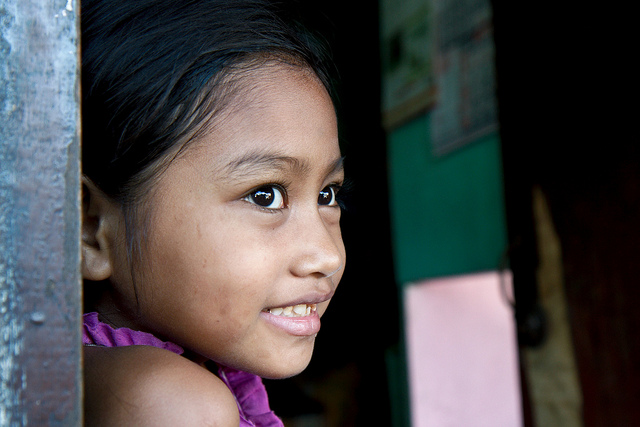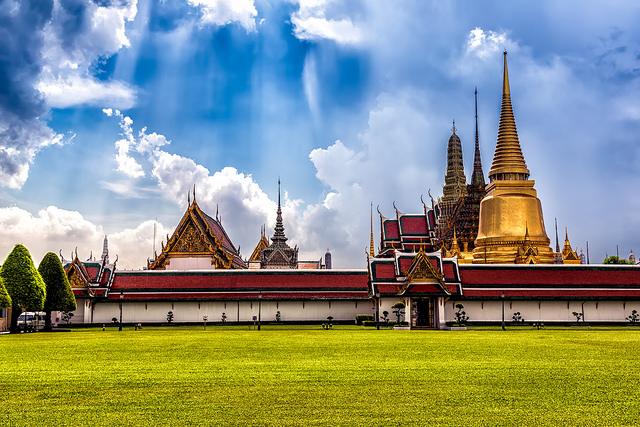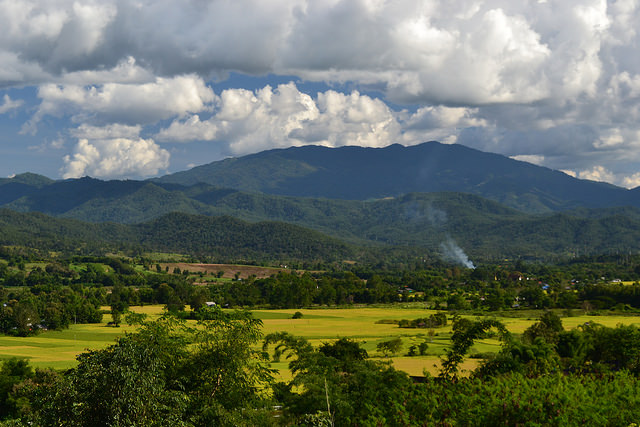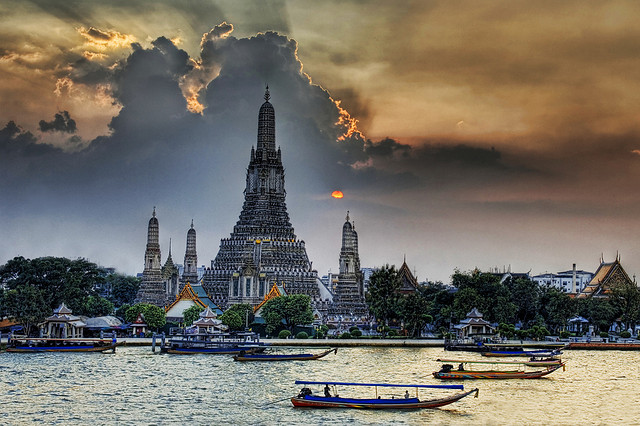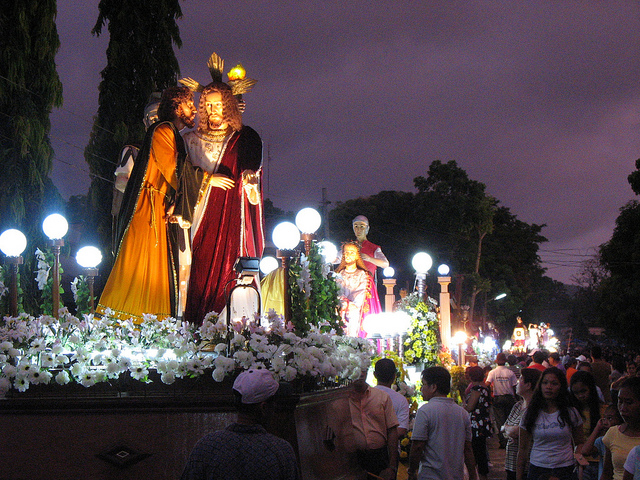Southeast Asia is predominantly Muslim and Buddhist, so Christian traditions like Good Friday 2013 are celebrated in varying degrees and shades of religious fervor. The scale of celebration is also influenced by the prevailing political and cultural conditions such that Good Friday can either be a business-as-usual day, or a nationwide public holiday.
Good Friday is the Friday before Easter Sunday. In other parts of the world it is referred to as Easter Friday, Great Friday, Holy Friday or Black Friday. It is the day that commemorates the crucifixion of Jesus Christ and His death on the cross.
Among Christians, Good Friday is the first day of the Paschal Triduum, or the three days that commemorate the passion, death, burial and resurrection of Jesus Christ. The first two days (that is, Good Friday and Black Saturday) are meant to be days of fasting. Abstinence from eating meat and indulging in worldly pleasures should be faithfully exercised on Good Friday.
In the Julian calendar used by Eastern Orthodox churches, Easter Sunday traditionally coincided with the first Sunday that follows the vernal equinox, or the first Sunday that happens after the Paschal Full moon. Western Christianity uses the Gregorian calendar, whose March 21 (the calendar date of the vernal equinox) equivalent is April 3.

In 2013, Good Friday falls on March 29.
How Is Good Friday Observed in Southeast Asia?
Brunei
Shari’a Law in Brunei forbids any form of religion apart from Islam. Christians, who make up about 10% of the population, can celebrate their personal religious beliefs but only in private. That said, Good Friday in Brunei is not celebrated (at least publicly) as any outward expression of non-Islamic faith can be meted with harsh punishment – arrest, detention or deportation.
Cambodia
In Cambodia, where the population is mostly Buddhist, Good Friday is not a public holiday or even a special holiday. Catholics represent only 0.15% of the population, and there are no dioceses in the country. Other Christian religions, despite reports of growth in recent years, are still in the minority. Interfaith Good Friday service is nonetheless celebrated so any Christian can contemplate on the spiritual context of the occasion in a conducive setting.
Indonesia
Good Friday in Indonesia is a regular public holiday despite the predominance of Islam. Good Friday is most colorfully celebrated in Larantuka in East Nusa Tenggara. This subdristrict of Flores Island has strong colonial Portuguese roots. More than 83% of the population is Roman Catholic, so “Semana Sancta” is more in keeping with the Vatican.
Larantuka Catholics take their 16th century statue of Jesus Christ out for a 7-kilometer procession by land and sea. The Passion of the Christ is recited at each of the 8 stops that represent the major clans of Larantuka. In each stop, the Passion of the Christ is recited and short prayers are offered. The statue of the Virgin Mary, also from the 16th century, is enshrined in the church so the faithful can worship and kiss the feet of her statue as it awaits the arrival of the statue of Christ. When the two figures are united, Good Friday service starts and lasts all night.
Laos
Laotians are 67% Buddhist, 2% Christian, and 0.7% Catholic. Laos politics also make it next to impossible for Laotian Christians to celebrate Good Friday in their usual places of worship. Reports have surfaced that the communist government banned the celebrations of the previous Holy Week. There were even reports of persecution among Christians. Despite all these challenges, Christian followers celebrated Palm Sunday, Good Friday and Easter outside their churches in an open challenge against the government’s stand on religious freedom.
Malaysia
In Muslim-predominant Malaysia, “Datuk Mati” (Death of Christ) is devoutly celebrated in Melaka. There, the 1710 Catholic Church was established by Portuguese missionaries and remains the site of pilgrimage (and tourist attraction) for thousands of Catholics and non-Catholics alike. The life-sized alabaster statue of Jesus Christ is taken out for procession and veneration. The faithful light candles as they join the procession, and kiss the feet of the statue of the dead Christ before going home with scented flowers.
Next year, the Passion Play, a dramatization of the crucifixion and death of Christ, will be staged after a successful debut last year.
Good Friday in Malaysia is a state holiday in Sabah and Sarawak.
Myanmar
A predominantly Buddhist country, Myanmar does not celebrate Good Friday as a national holiday as only 4% of the population is Christian (3% Baptist, 1% Catholic). But there are Catholic missionaries in Myanmar, and a dozen or so dioceses, so Good Friday service and rituals are observed even when the rest of the country consider Good Friday like any other day.
Philippines
The only predominantly Catholic country in Southeast Asia, the Philippines regard Good Friday as a national holiday and a major religious festivity. Dramatizations of the Passion of the Christ, or Passion Play, are staged nationwide. Several forms of penance, from public self-flagellation to actual crucifixion, are offered to atone for sins and to beseech for miracles and healing. Candlelight processions to commemorate the Burial of Christ take place all over the country, and long lines can be seen outside Catholics Churches as the devout await their turn to kiss the feet of the dead Christ.
Transportation can be scarce on this day, all government offices and most businesses are closed, and traffic can be a problem as the whole country contemplates the significance of the occasion in their places of worship.
Singapore
Christians, after Buddhists, comprise 18% of Singapore’s population. As such, Good Friday is a public holiday in this tiny, culturally diverse country. Commerce goes on as usual, but crowds are weekend thick. Non-Christians often spend the day outdoors.
Good Friday is celebrated with services in the afternoon to commemorate the death of Christ. Fasting is observed, and candlelight processions are also held albeit in limited areas. Kampong Bahru Road and Victoria Street come alive at dusk as hundreds of Christians (Catholics) light candles and join the procession for the Burial of Christ.
Thailand
The majority of Thais are Buddhists. Understandably, Good Friday is not a public holiday nor an observance in a country with only less than 1% Christian. In Chonburi, Bangkok and Pattaya, however, there are murals and stained glass art that depict the 14 Stations of the Cross. Among Catholics, there is Good Friday service and the staging of rituals led by Roman Catholic orders.
Vietnam
Christians only comprise 8% of the Vietnam population while the majority are Buddhists. Like Thailand, Vietnam does not consider Good Friday a national holiday nor is it observed. Nonetheless, Catholics across Ho Chi Minh City, the country’s capital, celebrate Lent according to traditional rites. On top of liturgical celebrations, burial procession of the statue of Christ and its veneration, Vietnam Catholics meditate, make donations and raise funds during the 40 days of Lent to help the needy.
Photo by madz pacpaco
